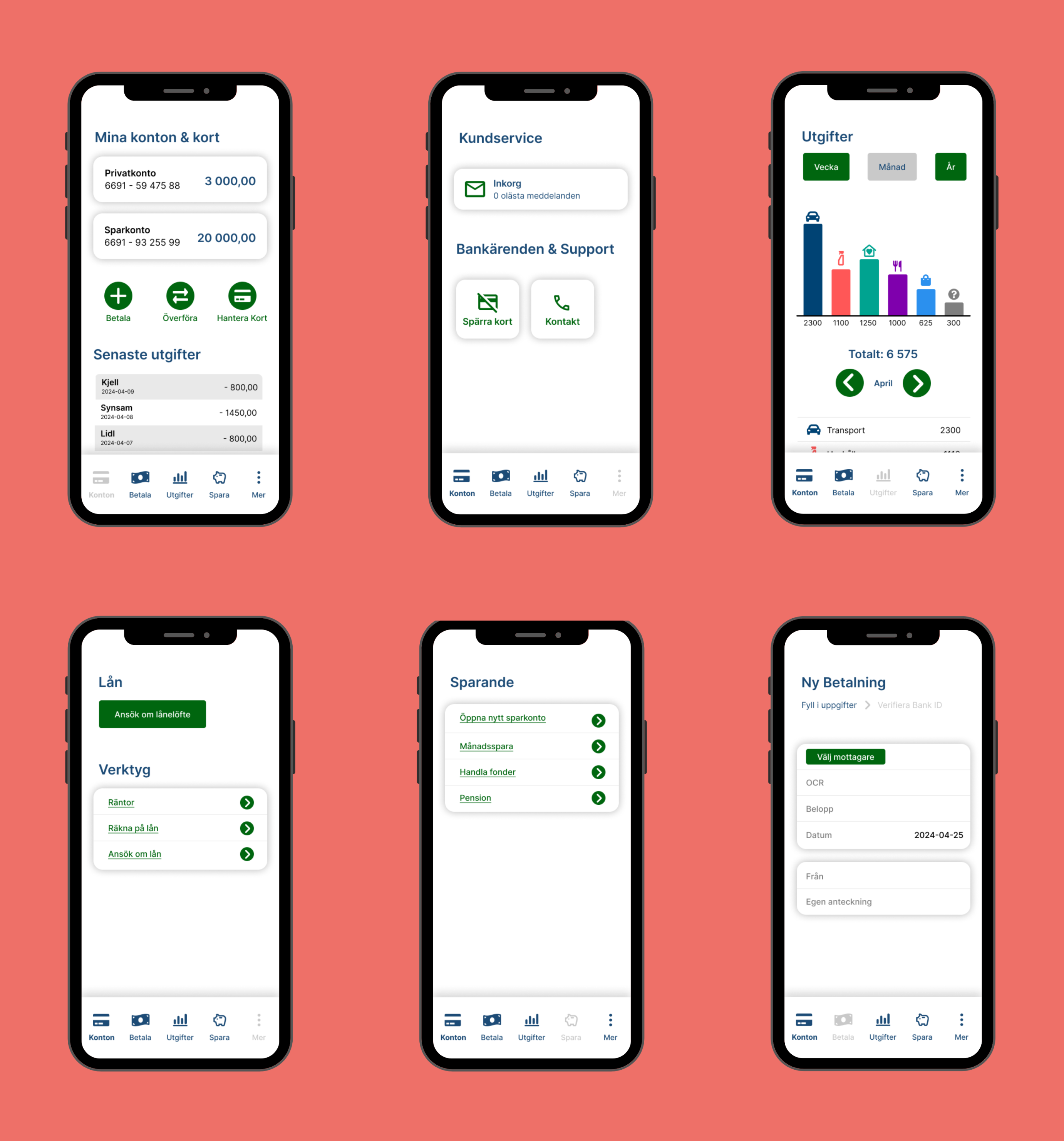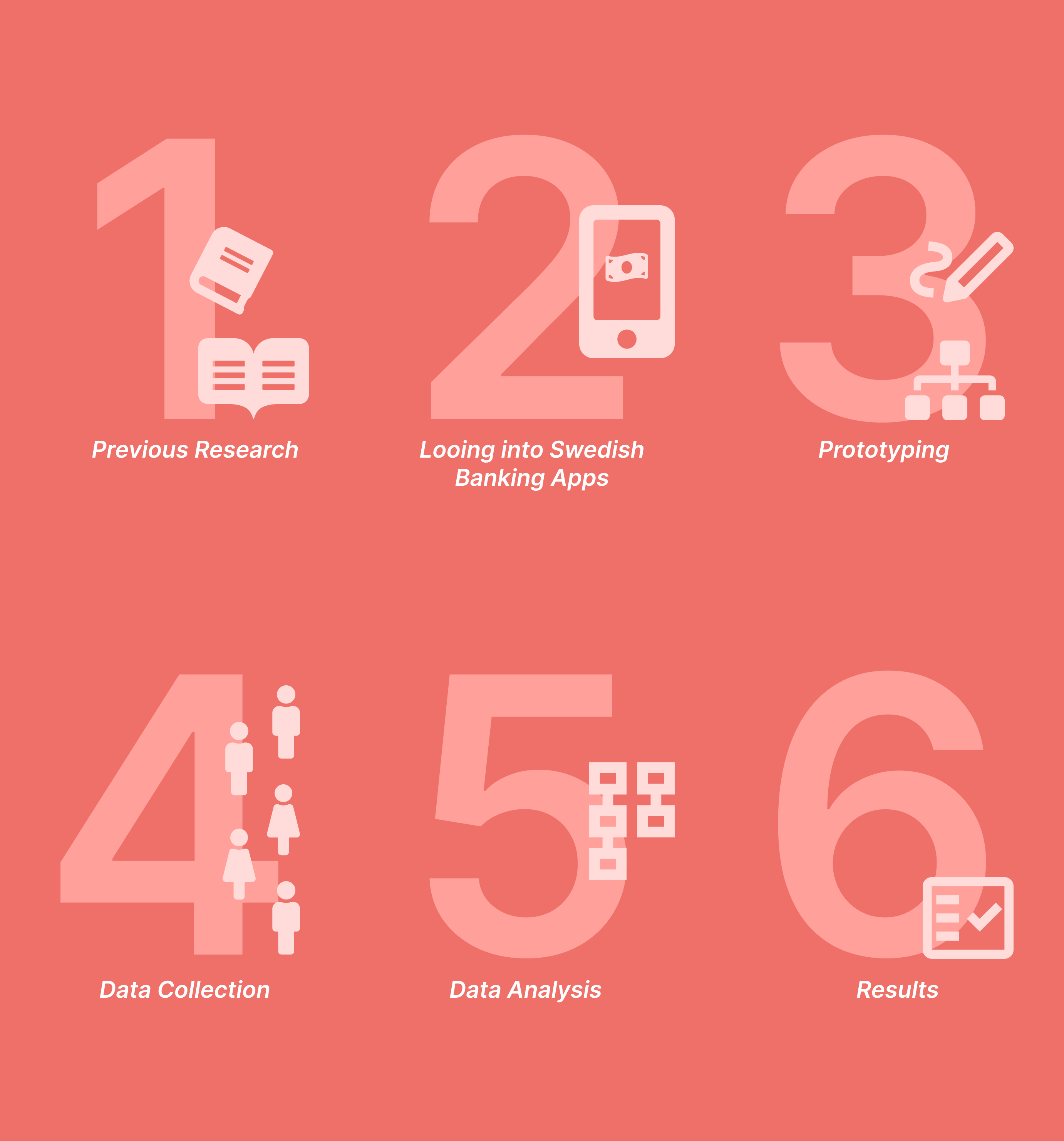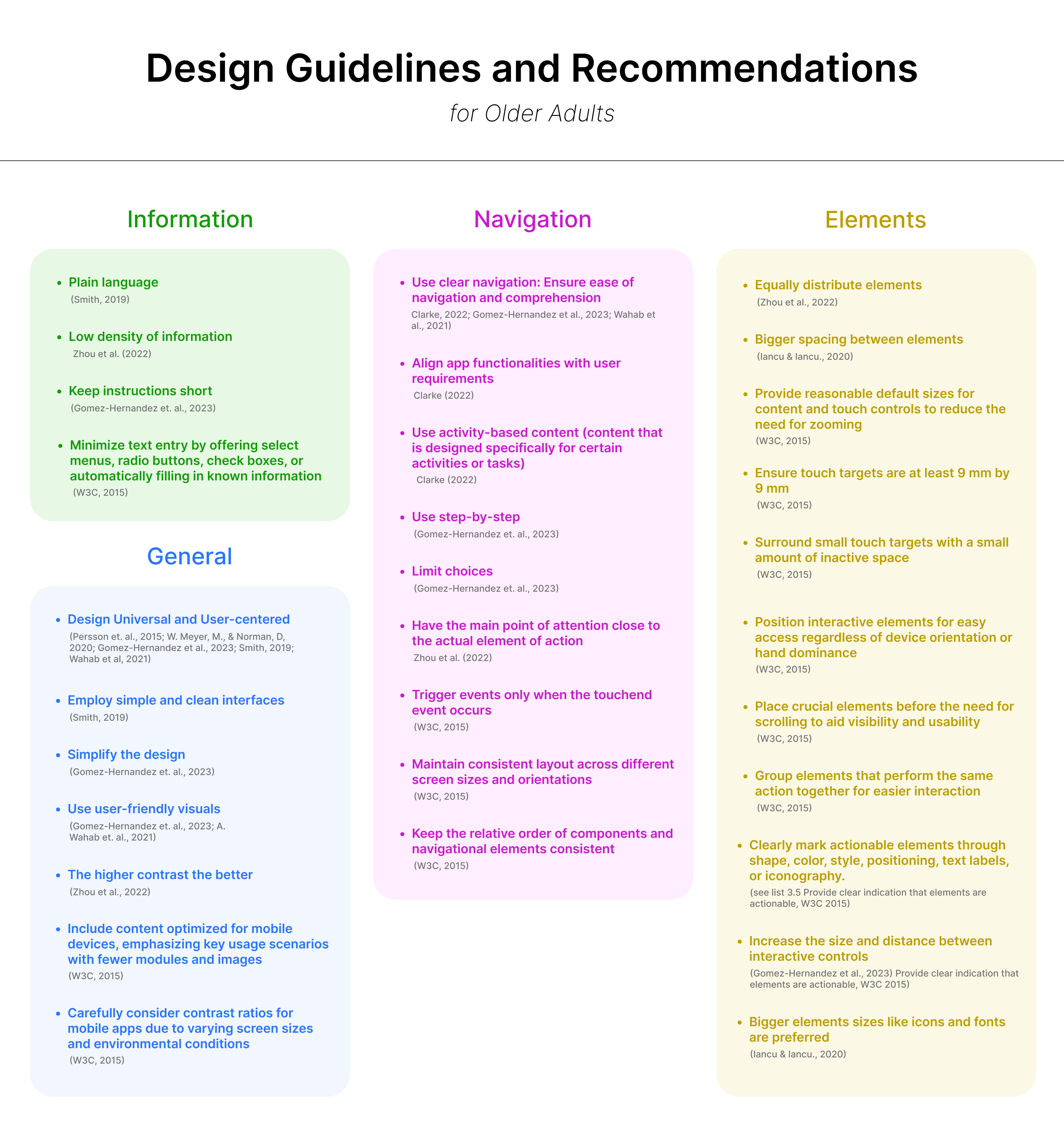Designing FinTech Applications for Older Adults
A qualitative study evaluating previous design guidelines and recommendations by semi-structured interviews, usability testing, and prototyping.
The concept of combining finance and technology called FinTech, has revolutionized financial services, making them more accessible through mobile applications. However, previous studies show that older adults (aged 70-85) face usability challenges with these banking apps. Within this demographic, many struggle with FinTech applications due to physical, cognitive, and motivational factors. The shift towards digital services and lack of familiarity is something that leads to older adults feeling excluded. Everyone should be able to use their banking apps regardless of age and should be included in every aspect of today’s society. By gathering and evaluating previous design guidelines regarding mobile UI and UX for older adults, we had the goal of finding ways to improve the general user interaction, inclusivity, and independence for this demographic in Sweden.
By investigating Sweden’s four greatest banking apps and collecting previous design guidelines, we created a prototype of a fictitious banking app that was tested through usability testing. Five participants aged 71-82 were interviewed sharing their experiences with mobile apps. They also completed tasks in the prototype with a think-aloud method.
Our findings revealed that FinTech apps often struggle with small text size, information overload, and navigation. While some participants found their current banking apps easy to use, others faced significant challenges. The findings also revealed that established design guidelines and recommendations provide a strong foundation for creating accessible apps. The prototype generally provided positive experience for participants, suggesting that these guidelines can effectively enhance FinTech apps and their usability for older adults.

%20NMD_MK-HL.jpg)


